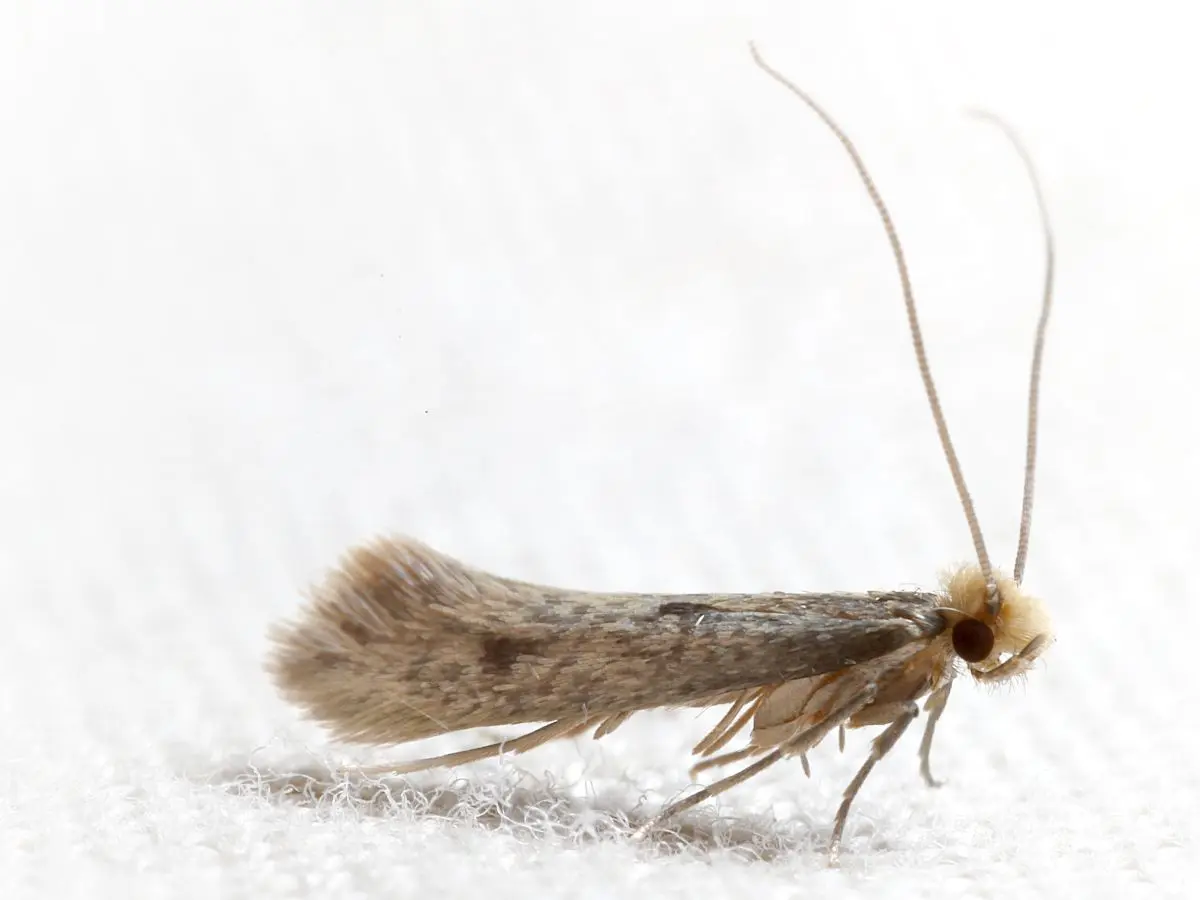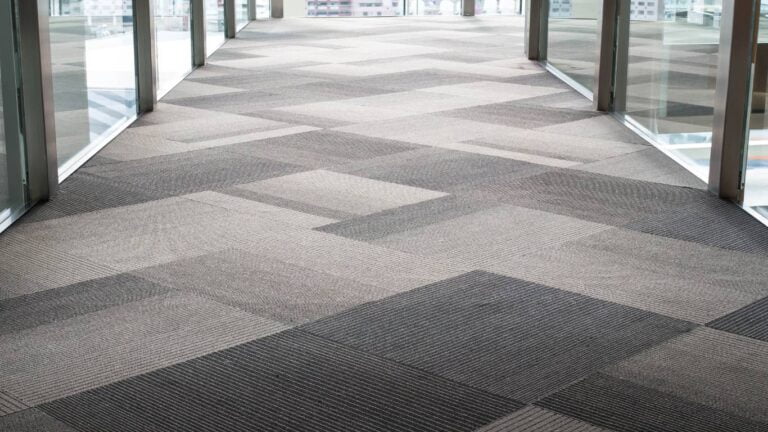Noticed small, golden moths fluttering around your home, or maybe patches of your carpet mysteriously disappearing? You could be dealing with carpet moths, a common pest that can cause significant damage to natural fibre carpets. This comprehensive guide will help you get to know these sneaky insects, spot their presence in your home, and most importantly, it’ll give you practical steps on how to get rid of them. From DIY methods to knowing when it’s time to call in the professionals, we’ve got you covered. So, if you’re looking to protect your favourite wool rug or simply want to enjoy a moth-free home, this guide is your ticket to a carpet moth-free life.
Understanding Carpet Moths
What are Carpet Moths?
Carpet moths, also known as clothes moths, are a common household pest that can cause significant damage to natural fibre carpets. They’re particularly fond of wool, and their feeding habits can result in noticeable wear and tear on your carpets. These moths are small, often golden in colour, and can be a real nuisance if you don’t deal with them promptly.
Lifecycle of Carpet Moths
The lifecycle of a carpet moth isn’t much different from any other moth. It starts as an egg, which hatches into a larvae. It’s during this larval stage that your carpets can suffer the most damage. The larvae feed on the fibres, munching their way through your carpet and causing noticeable damage. After a period of feeding and growth, the larvae then pupate and eventually emerge as adult moths, ready to start the cycle all over again.
How to Identify Carpet Moths?
Identifying a carpet moth infestation can be a bit tricky, as the adult moths are quite small and often go unnoticed. However, there are a few signs you can look out for. Firstly, you might spot adult moths flying around your home. They’re small and often golden-coloured, which can make them hard to spot. Secondly, you should inspect your carpets for any signs of damage. Look for areas where the fibres have been eaten away, especially in dark, undisturbed areas like under furniture. Lastly, you might also find larvae or eggs on your carpet. Regular vacuuming, especially in less trafficked areas, can help remove these and prevent further damage.
Carpet Moths vs Clothes Moths
While carpet moths and clothes moths are often used interchangeably, they’re essentially the same pest. Both can cause significant damage to natural fibres, whether it’s your wool carpet or your favourite wool sweater. The key difference is simply where they choose to lay their eggs and where the larvae feed. Regardless of whether they’re in your wardrobe or on your floor, the control measures remain the same.
To protect your home from these pests, regular inspection and cleaning of your carpets is the way to go. This includes vacuuming, thorough cleaning, and rotating your rugs or changing their position occasionally to avoid wear patterns and undisturbed areas. You can also use moth traps, natural repellents, and chemical treatments to help control an infestation. If the infestation is extensive, don’t hesitate to call in a pest control professional. Remember, the key isn’t just to kill the adult moths but also to target the larvae, which cause the actual damage. By taking these steps, you can help ensure that carpet moths don’t return to your home.
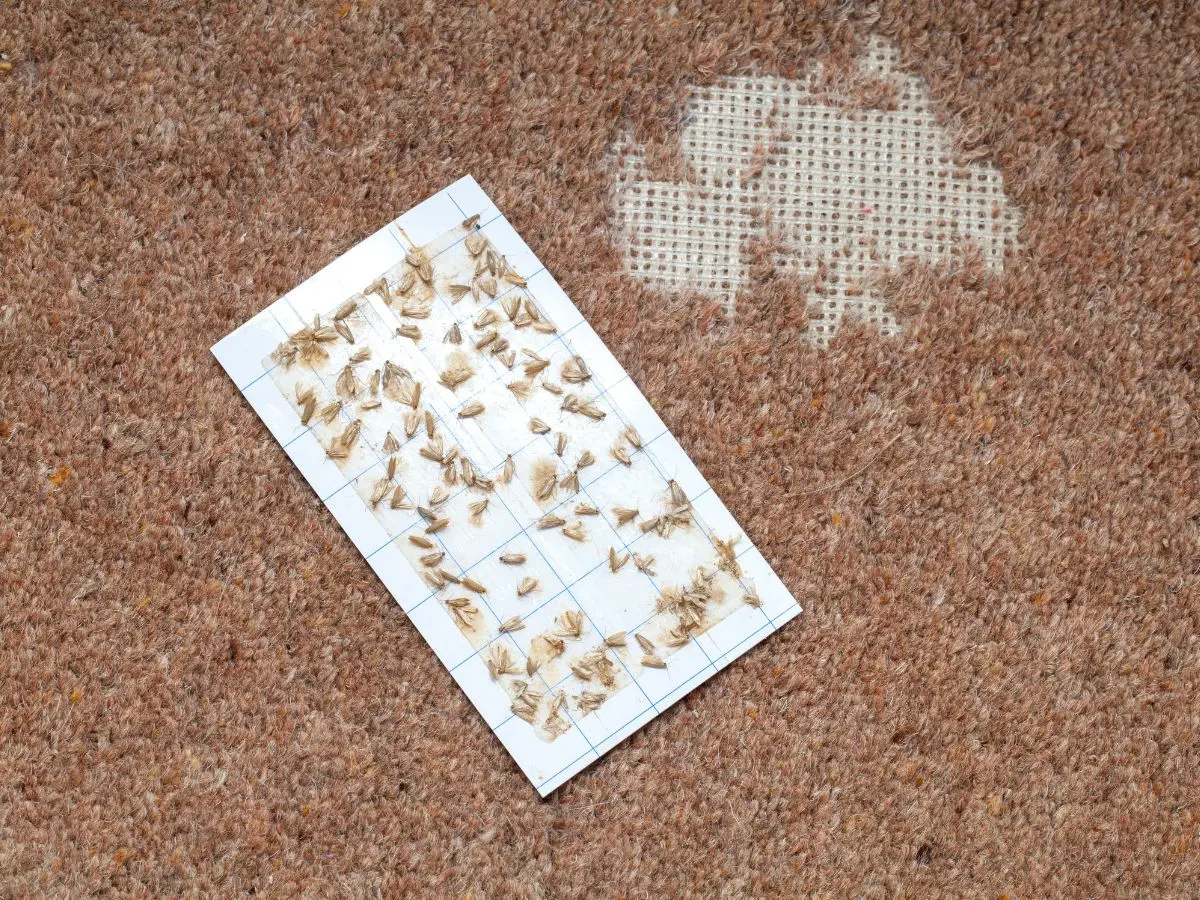
The Damage Caused by Carpet Moths
These pests can wreak havoc on your natural fibre carpets, particularly those made of wool. Their feeding habits result in a trail of destruction that can be quite extensive.
Evidence of Carpet Moths in Your Home
Early detection can save your carpets from severe damage. While adult moths might be seen fluttering around, the larvae are the real culprits. They prefer dark, undisturbed areas like beneath furniture, so these spots should be checked for signs of larvae or areas where the carpet fibre has been gnawed away.
Assessing the Damage: What to Look For
Carpet moths can leave behind bald patches or areas where the pile is noticeably shorter. In severe instances, they can eat right down to the carpet backing. While they have a preference for wool, they won’t discriminate against other natural fibres. So, even if you’ve got a mix of wool and synthetic carpets, don’t assume the synthetic ones are immune.
Long-term Impacts of an Infestation
Ignoring a carpet moth infestation can lead to long-term consequences. The repair costs for the damage they cause can be hefty, and in some cases, you might need to replace the entire carpet. Moreover, the dust and debris they leave behind can lead to allergies and respiratory problems.
Other Issues Linked to Carpet Moths
Carpet moths can also infest other items made from natural fibres, such as clothing, upholstery, and even stuffed toys. They can also indicate a larger pest problem, as they’re often attracted to homes with high humidity levels. Therefore, if you’ve got a carpet moth problem, it’s worth checking your home for other pests and taking steps to reduce humidity levels.
Addressing a carpet moth issue isn’t just about eliminating the adult moths but also targeting the larvae. Regular inspection and cleaning, along with other preventative measures, can help ensure they don’t make a comeback.
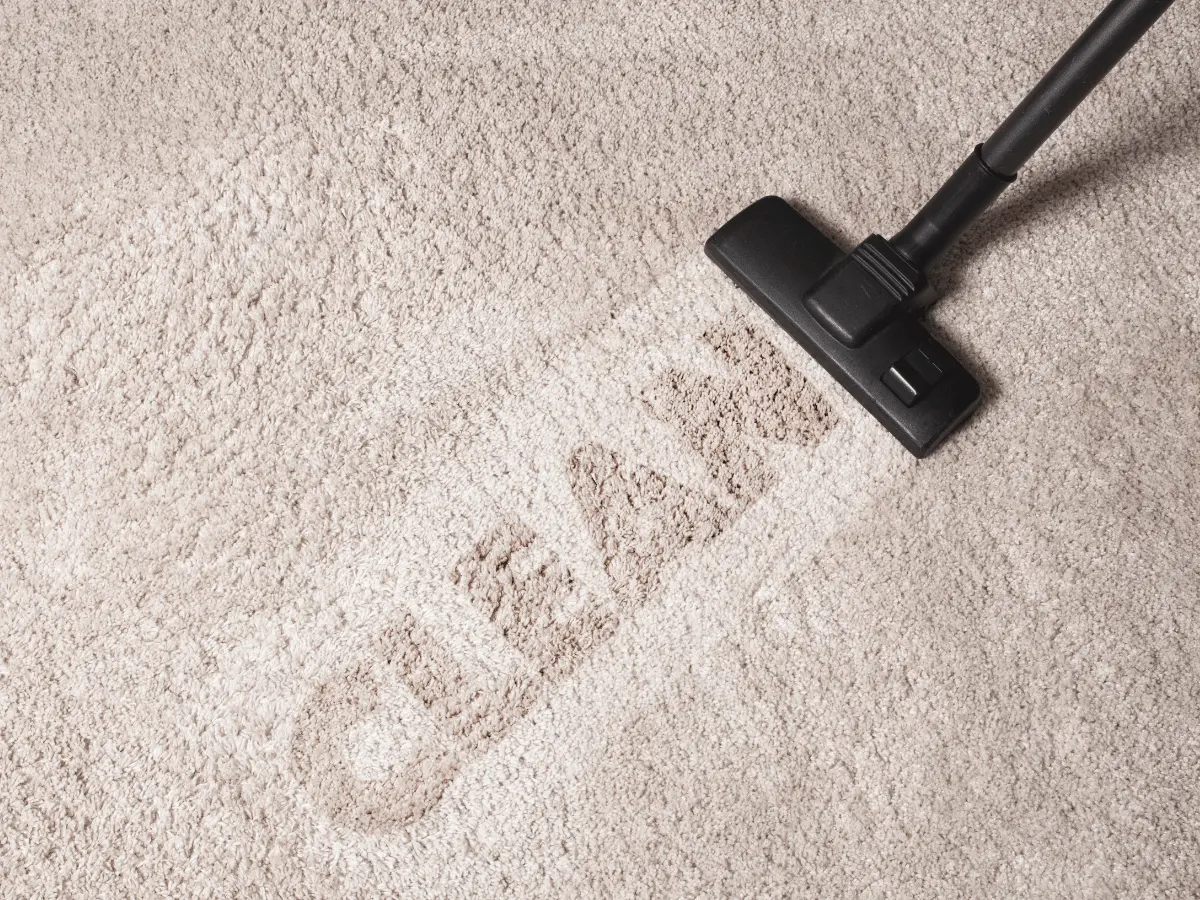
Prevention and Control of Carpet Moths
Regular Cleaning and Vacuuming
Maintaining cleanliness is a crucial step in keeping these pests at bay. Vacuuming, particularly in secluded spots, aids in eliminating carpet moth larvae and eggs. It’s crucial to focus on corners and beneath furniture, and to dispose of the vacuum bag outdoors immediately after use to prevent larvae from remaining inside.
Using Insecticides and Pheromone Traps
There are numerous products on the market that can assist in managing a carpet moth infestation. Traps laced with pheromones can lure male moths, disrupting their breeding cycle. While these traps won’t eradicate an infestation independently, they can contribute to a comprehensive strategy. Sprays and powders specifically designed for carpet moths can exterminate both larvae and adult moths. Always adhere to label instructions and conduct a patch test before applying broadly.
Natural Remedies for Carpet Moths
For those who prefer a more organic approach, there are several alternatives that can deter these pests. Lavender, cedarwood, and clove can serve as natural deterrents. Position sachets of these in areas where you’ve detected moths. Moreover, smaller infested items like rugs or cushions can be sealed in plastic bags and frozen for a minimum of 48 hours to exterminate the larvae and eggs.
Importance of Periodic Professional Cleaning
Despite regular cleaning and the use of traps and natural deterrents, sometimes the infestation can be overwhelming. In such scenarios, it may be beneficial to engage a pest control expert. Additionally, a deep clean of your carpets by a professional carpet cleaner or using a rented carpet cleaner can exterminate larvae and remove eggs.
Prevention is always the optimal approach. Regularly inspect and clean your carpets. Rotate rugs or alter their position occasionally to prevent wear patterns and secluded areas. Maintain a dry environment in your home, particularly in carpeted areas, as these pests thrive in humid conditions. Ensure windows and doors are properly sealed, and consider installing screens to prevent adult moths from infiltrating your home. The objective is not just to exterminate adult moths but also to target the larvae, which are responsible for the actual damage. Regular inspection and cleaning will help ensure carpet moths don’t make a comeback.
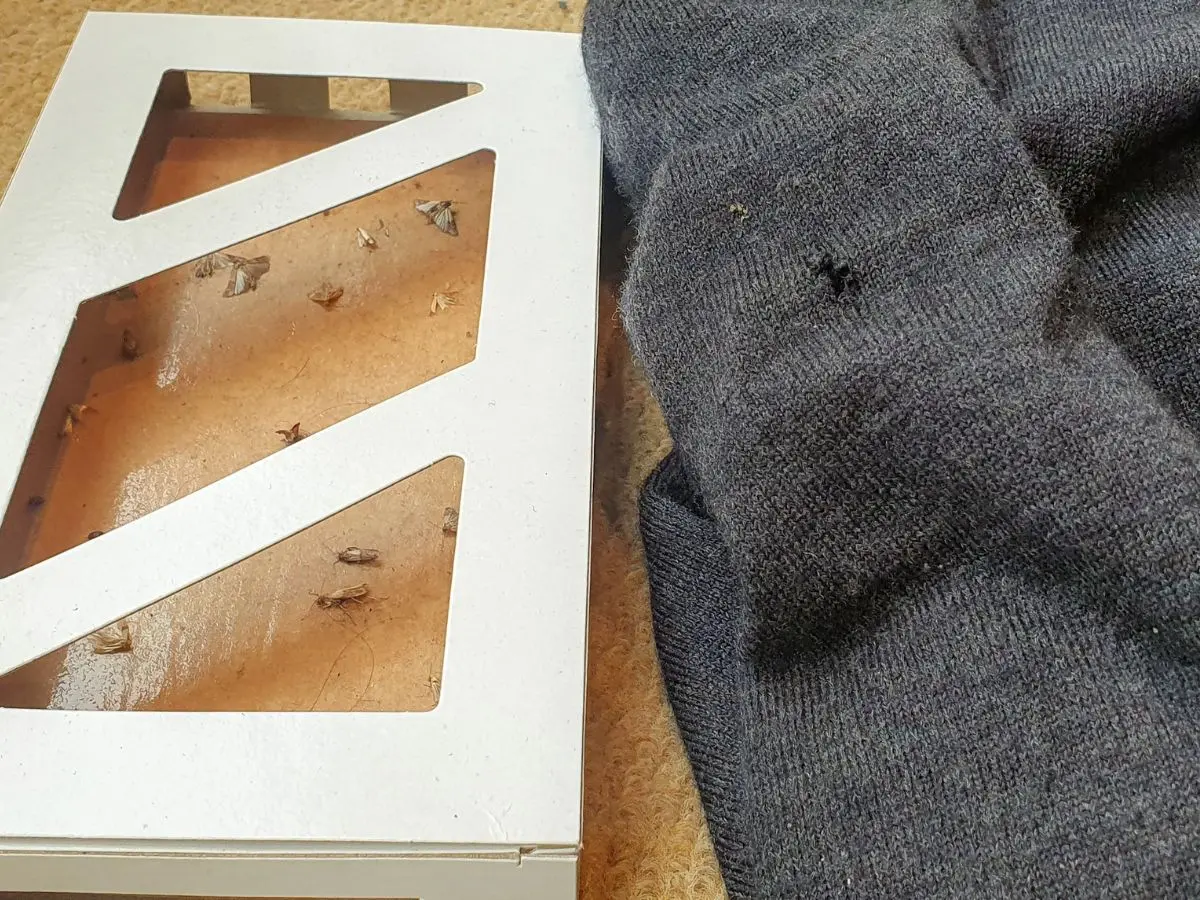
Dealing with a Carpet Moth Infestation
Identifying the Extent of the Infestation
To gauge the severity of the infestation, look for signs such as threadbare patches or holes in carpets, larvae on carpets or in clothing, and small white cases left behind by hatched eggs.
Deciding Between DIY and Professional Treatment
Once you’ve assessed the extent of the infestation, you’ll need to decide whether to tackle the problem yourself or hire a professional. If the infestation is extensive and the DIY measures aren’t helping, you might need to hire a pest control professional.
Step-by-step Guide to DIY Treatment
If you choose to handle the infestation yourself, here’s a step-by-step guide.
- First, vacuum regularly, especially in less trafficked areas, to remove larvae and eggs from the carpet. Make sure to vacuum edges and under furniture, and empty your vacuum outside immediately after use to ensure you’re not keeping any larvae inside.
- Next, give your carpets a thorough clean. You can hire a professional or rent a carpet cleaner for this. A thorough clean can kill larvae and remove eggs.
- Then, use moth traps. Pheromone traps attract male moths, disrupting their breeding cycle. These won’t get rid of an infestation on their own but can help as part of a broader strategy.
- After that, use natural repellents. Lavender, cedarwood, and clove can act as natural repellents. Place sachets of these in areas where you’ve noticed moths.
- Next, use chemical treatments. Carpet moth sprays and powders are available, which can kill both larvae and adult moths. Always follow label instructions and test on a small patch before widespread application.
- Finally, freeze smaller items like rugs or cushions with moth larvae. These can be placed in plastic bags and frozen for at least 48 hours. This kills the larvae and eggs.
Working with Pest Control Professionals
If the infestation is extensive, you might need to hire a pest control professional. They’ve got the expertise and equipment to effectively treat your home.
In addition to treatment, preventative measures are crucial. Regularly inspect and clean your carpets, professional steam cleaning is recommended every 12 months. Rotate rugs or change their position occasionally to avoid wear patterns and undisturbed areas. Keep your home, especially carpeted areas, dry as moths prefer humid environments.
Seal entry points like windows and doors and consider adding screens. This can prevent adult moths from entering your home. Remember, the key is not just to kill the adult moths but also to target the larvae, which cause the actual damage. Regular inspection and cleaning will help ensure they don’t return.
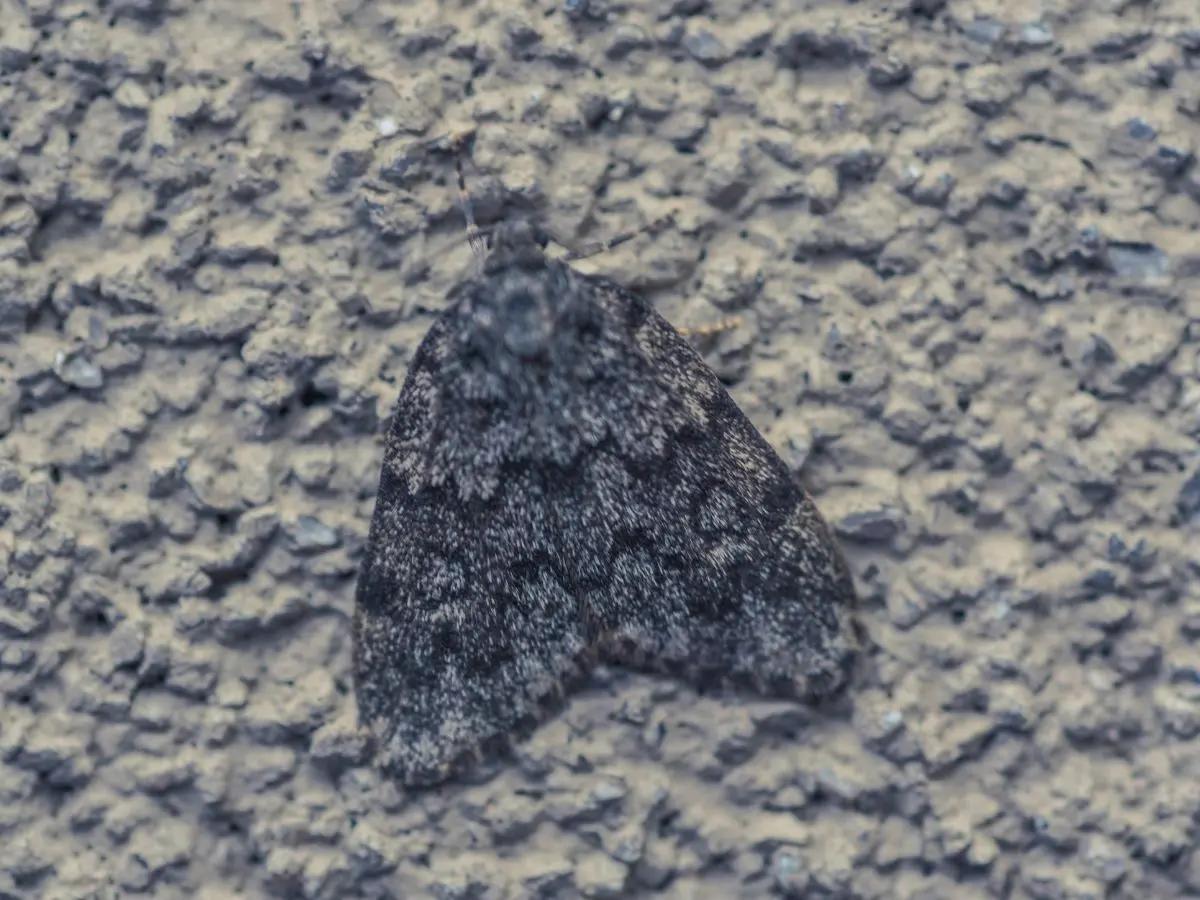
Aftercare Post Carpet Moth Infestation
Once you’ve successfully dealt with a carpet moth infestation, it’s important to make sure these pesky creatures don’t make a comeback. The secret lies in proper aftercare and maintenance of your carpets.
Proper Cleaning and Maintenance post Infestation
After an infestation, maintaining a regular cleaning routine is key. This helps remove any remaining larvae and eggs from the carpet.
Thoroughly cleaning your carpets is also a smart move. This can be done by hiring a professional or renting a carpet cleaner. A thorough clean can kill any remaining larvae and remove eggs, ensuring that your carpets are completely cleaned and free from any potential re-infestation.
Preventing Reinfestation
Preventing a re-infestation involves a mix of regular cleaning, use of natural repellents, and sealing potential entry points.
Make sure to regularly inspect your carpets and rotate rugs or change their position occasionally. This helps to avoid wear patterns and undisturbed areas where moths might find a haven.
Sealing entry points is another important step in preventing reinfestation. Make sure windows and doors are properly sealed, and consider adding screens to prevent adult moths from entering your home.
When to Seek Professional Help Again
If you notice signs of a new infestation, such as adult moths flying around or areas where the carpet fibre has been eaten away, it might be time to seek professional help again.
Maintaining Sanity and Health of Your Carpet
Remember, the key to maintaining the health of your carpet isn’t just to kill the adult moths but also to target the larvae, which cause the actual damage. By following these steps, you can keep your carpets in top condition and free from the nuisance of carpet moths.
Wrapping It Up
At the end of the day, it’s about winning the battle against carpet moths with a mix of proactive and reactive steps. Regularly inspecting and cleaning your carpets, using a blend of natural repellents, chemical treatments, and professional cleaning, can stop an infestation before it becomes a major issue.
Don’t forget, it’s the larvae that are the real troublemakers, and your aim shouldn’t just be to get rid of adult moths but to target these destructive larvae and their eggs. By keeping an eye out, sticking to a routine cleaning schedule, and acting quickly when you spot the first signs of trouble, you’ll be able to keep your home free of carpet moths. Trust me, both your carpets and your peace of mind will be grateful!

